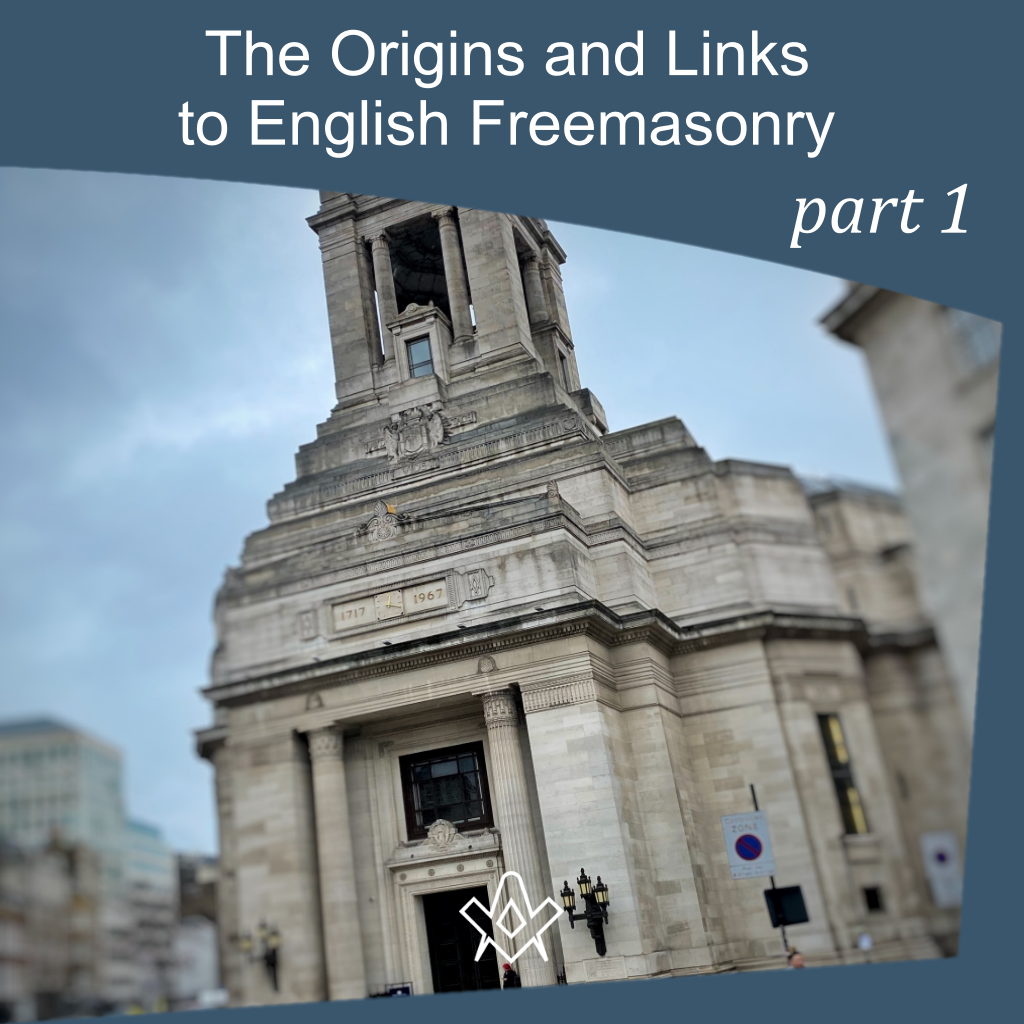Freemasonry as we know it now, was established in 1717 [or 1721], however there is little written about the times before.
We use ritual that supposedly stems from the building of King Solomon’s Temple, but it’s said to be only symbolic.
So, let’s look at some the links between the Freemasonry of today with the original Operative builders. I hoped to find out if there is more than just symbolism – do we have a firm and provable link to those who built the earliest of temples? Well, it has been researched many times but here are a few findings.
In China, the implements of architecture were used in a system of moral philosophy at an early date.

Mencius – As depicted in the album Half Portraits of the Great Sage and Virtuous Men of Old
IMAGE LINKED: wikimedia Attribution 4.0 International (CC BY 4.0)
‘A master mason, in teaching his apprentices, makes use of the compasses and the square.’
Mencius – who wrote around 300 B.C.
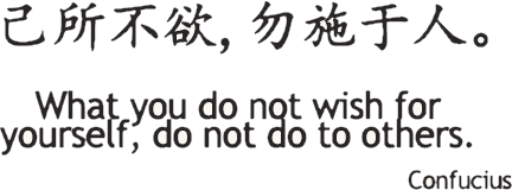
What yo do not wish for yourself, do not do to others – Confucius
IMAGE LINKED: wikimedia Attribution 4.0 International (CC BY 4.0)
‘A man should abstain from doing unto others what he would not they should do unto him; and this is called the principle of acting on the square’.
Great Learning – 500 B.C
Victor Burridge produced an interesting paper entitled ‘The Authentic History of British Freemasonry’, and these are some of his findings.
The Order of Ancient Free and Accepted Masons is of course an adaptation of the system practiced by the Christian Operative Masons of Europe in the Middle Ages but the oldest records in this country date back to the late fourteenth century. ( Regius Manuscript 1340 )
The first Operative masons to arrive in England came over with the Romans 55 A.D to build roads and dwellings for their armies. The first recorded Guild meeting was in Ullesthorpe, near Leicester.
As the system governing Operative masonry developed in this country, the Guild Lodges were formed and were based upon those used at the building of the Tower of Babel and King Solomon’s Temple.
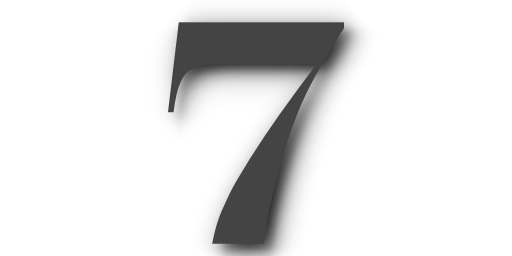
The masons engaged in the work were divided into seven degrees.
The First consisted of the Apprentices, or men of little experience. They worked on the stone as it came from the quarries.
The Second Degree consisted of Fellowcrafts who prepared the stone to exact gauges so that every stone was true and to the required standard.
The Third Degree was the expert workmen who checked every stone before it was shipped to the Temple site.
The Fourth Degree was the erectors and setters who, according to Hebrew custom, worked barefoot and with heads covered as the ground in which they worked was holy.
The Fifth Degree comprised of the Superintendents of Works – 33rd degree who ruled over the people who wrought the work.
The Sixth Degree consisted of the Experts sixth in rank, while the Seventh Degree was restricted to the three Grand Masters who had supreme command of the Guild.
Under the Norman system the Entered Apprentice served for seven years to become a free man. The Square Mason, or Fellowcraft, was confined to work that was square, straight, level, or upright.
The regulations state that he was not allowed to carry out any work that was carved, circular or arched, neither was he permitted to use a pair of compasses. He wore a blue apron and a blue badge on his left breast to indicate his rank.
The Seventh Degree consisted of the three Master Masons, each of whom had a right-angled square as his emblem. Presumably, this eventually became the Master and the two Wardens.
When the Lodge was opened, each Master placed his square on the top of the pedestal, together with a fourth that was already there, to form a swastika. Of course, that symbol holds very sinister connotations now, but its original meaning was ‘auspiciousness’. Over the years its significance was lost, and it was eventually dropped in Operative masonry.

Oliver Cromwell by Samuel Cooper
IMAGE LINKED: wikimedia Attribution 4.0 International (CC BY 4.0)
There is a large gap in the records until the late sixteenth century, owing partly to the lack of writing skills. There was also a steady decline in Operative masonry after the Commonwealth under Cromwell. They were of course mainly employed in the construction of stately edifices for the church and nobility.
Gradually they began to admit prominent men who were not Operative masons but spectators of part of their ceremonies; good men who wanted to be better.
It’s interesting to note that ‘Cowans’ were specifically prohibited from joining Operative lodges and this was written into their regulations. The term was applied to a rough builder of dry-stone walls who had not undergone a proper apprenticeship or training. In today’s trade union terms, he would be called a ‘scab‘.
So the outer guard, or Tyler’s job was specifically to prevent anyone who pretended to be a tradesman from entering a lodge; hence the system of recognition that was applied at the very earliest of times so that different grades of workmen were paid at the correct rate. Admission into a ‘Speculative’ or ‘Spectator’s’ lodge was restricted, as it is today, to only those qualified.
Proof of the admission of Speculative masons into Operative lodges is recorded in the earliest minutes of the Free-masons Company of London, which was founded in 1400. In 1655, the prefix ‘free’ was dropped and the title altered to The Masons Company, and it is recorded in the minutes that a non-Operative lodge was assembled under its wing in 1620, known as the ‘Acception’.
This Lodge ceased before the coming together of the two Grand Lodges.
The Worshipful Company of Masons: – https://www.masonslivery.org
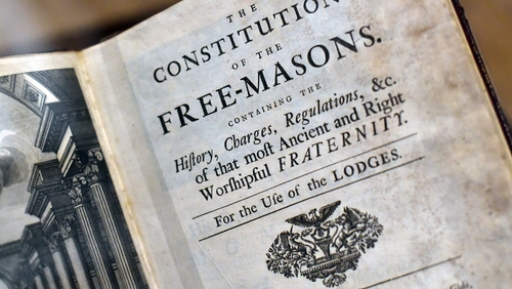
Book of Constitutions in 1723 – Anderson
IMAGE CREDIT: united grand lodge of england Attribution 4.0 International (CC BY 4.0)
Prior to this event, all Masons were required to be Christians. The first edition of the Book of Constitutions in 1723, was altered to allow good men and true of all religions – leaving their particular opinions to themselves.
Speculative Freemasonry expanded rapidly but the records of the London Grand Lodge show that it was anything but a centre of union and harmony.
Anderson’s first Book of Constitutions consisted of the Entered Apprentice and Fellowcraft Degrees, and ‘The Masters Part’ for the Installation. Frequent revisions were made, and the Hiramic Legend was introduced to form the Third Degree [1725].
Other changes were also implemented, which led to accusations of gross irregularities and innovations being made – there was widespread dissatisfaction and revolt.
In 1724, the Grand Lodge issued warrants of constitution to lodges in Bath, Bristol, and Norwich, which apparently angered Brethren in York, who severed their relations with London and constituted themselves as The Grand Lodge of all England.
In London, the revolt grew rapidly, and by 1751 the rebels, or schismatics as they were called, set up another rival Grand Loge under the title of the Ancients. Their opponents called themselves the Moderns.
I’m sure I don’t need to go into great detail as we all know of the split and subsequent coming together of the two rival Grand Lodges.
However, there are some facts that I didn’t know, so I’ll share them with you. The Ancients included the Royal Arch in their Third Degree ritual – known as Raising to the Royal Arch; they also included Mark, while the Moderns refused to recognise the Royal Arch in Craft but they practiced it in Chapters. Originally only Past Masters were admitted into the Royal Arch, but this was later relaxed to allow all Master Masons to join.
The first meeting of the Premier Grand Lodge of England (originally titled; Grand Lodge of London and Westminster) was held on St John the Baptist’s Day [24 June] in 1717. This day was adhered to for Installations until 1725, after this it fell into abeyance, possibly because of English Freemasonry becoming non-denominational.

Jerusalem Talmud
IMAGE LINKED: wikimedia Attribution 4.0 International (CC BY 4.0)
There are references in the Jerusalem Talmud of how John foresaw the destruction of the Temple 70 A.D. and the serious risk of the Gentiles falling into vice and cruelty. He therefore resolved to take the ancient teachings, which we now call masonry, and preserve them as the principles of the first and original Grand Lodge.
The Hebrew scholars set up a Temple of Humanity with a Court of the Gentiles. Here the Gentiles came in touch with masonry as we now understand it.
Not only for the worship of the Most High, but also the inculcation of His moral Law. Since the precepts bore no reference to any religion, both Jew and Gentile could be, and were, admitted to the fraternity.
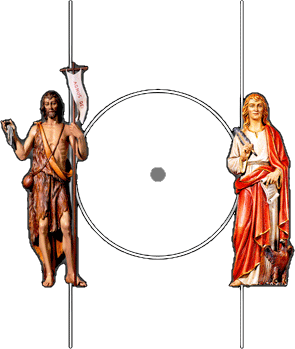
point within in a circle with John the Baptist & John the Evangelist
IMAGE LINKED: wikimedia Attribution 4.0 International (CC BY 4.0)
The natural ignorance of the Gentile world in the Middle Ages led to Freemasonry being entirely Christian. However, the historical teachings of John the Baptist, John the Evangelist, Johanan ben Zakki or John the son of Zacchaeusus (Za-Kee-Ous) contributed in no small part to the promulgation of the moral truths preserved by the Craft, and St John the Baptist and St John the Evangelist were especially recognised in the early days of British Freemasonry.
At the opening of a lodge of Operative masons, called The Worshipful Society of Free Masons, Rough Masons, Wallers, Slaters, Paviors, Plasterers and Bricklayers, the Chaplain recited the prayer that starts with:
Jachin, most Holy and Glorious El Shaddai, thou Great Architect of Heaven and Earth, who art the giver of all good gifts and graces, it goes on, give us the Holy Spirit to enlighten our minds with wisdom and understanding of this our worthy and worshipful Craft of Free Masons, and finishes with: This we humbly beg in Thy Name O El Shaddai.
So mote it be.
You can see how our prayers have evolved from those used by our operative predecessors.
Article by: Barry Stedman
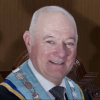
Barry was initiated into Freemasonry in Tudor Lodge 6947 UGLE, and was Master in 1995 and served as Master in other craft lodges and PZ in HRA. He is also a member of the Essex Provincial Oration team (based in England).
Barry works in TV and shot a video with Jim Davidson OBE ,Chelsea Lodge 3098, promoting for the RMBI Prince Edward, Duke of Kent Court at Stisted (Essex, England).
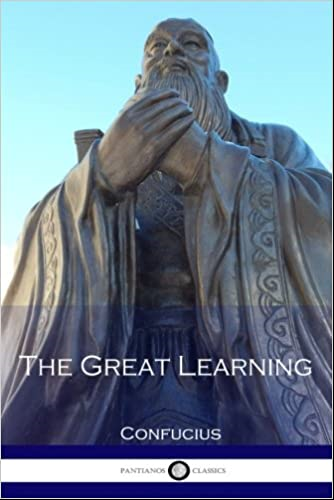
The Great Learning
One of the classic 4 books of ancient Confucianism, The Great Learning consists of a short initial commentary attributed to Confucius himself, followed by a lengthier tract written by one of his disciples named Zengzi.
The text emphasises achieving balance in everyday life and in thoughts. For the man who aspires to great wisdom, much time must be set aside for rest and contemplation. Life’s priorities must be organised according to their importance, and harmony must be rigorously cultivated in everyday associations and relationships. In learning, one must not consider one kind superior to the exclusion of others, but must instead strive for balance.
The translator James Legge was a Scottish Sinologist who spent much of his adult life in China collecting and translating the various philosophical and literary classics. Since Legge was present in the pre-modern China of the 19th century, where Confucianism held much sway, the authenticity of the tone cannot be doubted.
Devoting his talents to accurately rendering Confucian thought for Western consideration, Legge’s translations of the Chinese Classics were originally published by Oxford University Press, and remain strongly appreciated for their authenticity to this day.
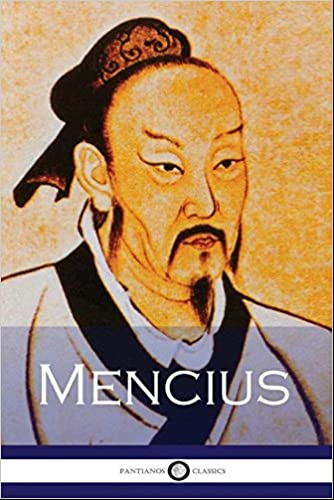
The book of wisdom by Mencius
The book of wisdom by Mencius, a sage of Ancient China, is presented here in its complete and authoritative English translation.
Written during and shortly after the Warring States period of Chinese antiquity, the book of Mencius is a selection of conversational dialogues between the philosopher and his various disciples. Together they discuss all manner of topics, from living a happy and virtuous life to the principles of raising a family and educating the young.
Breaking with Confucius himself, who venerated rulers and strong governance, Mencius argues for the right of common people to overthrow a repressive or brutal regime. The book is rich with analogy, examining the actions of the ancient kings and dukes of China in order to draw comparisons and enhance the lessons offered.
In life, Mencius was a prominent figure who travelled and lectured widely, serving variously as an educator, official and scholar in the realms of ancient China. His mother was by all accounts a paragon of virtue – to this day, Chinese society considers her and her influence own Mencius’s own published thoughts to be worthy of veneration.
Recent Articles: by Barry Stedmen
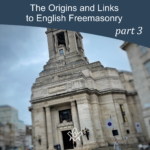 Origins and Links to English Freemasonry - Part 3 Quasi-Masonic societies - are the highly secretive Skull and Bones the real Illuminati? |
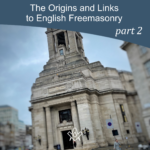 Origins and Links to English Freemasonry - Part 2 The Regius MS & Deciphering the Oldest Charges |
 Origins and Links to English Freemasonry - Part 1 Unexpected links between the Freemasonry of today with the original Operative builders. |
Recent Articles: masonic history
 Protestantism and Masonic Influence in Brazil Discover the untold story of how Freemasons helped Southern Americans immigrate to Brazil post-Civil War, fostering economic and educational growth in Santa Bárbara d’Oeste and Americana. Learn about their pivotal role in establishing Protestant churches and ensuring the secularity of the Brazilian State amidst a Catholic-dominated society. |
 Explore the proper use of the sacred word in Brazilian Freemasonry through an analysis of Masonic literature and Bible translations. Uncover the errors in pronunciation and the need for corrections to maintain liturgical coherence in rituals. Discover insights on Masonry, rituals, and the Hebrew word Boaz. |
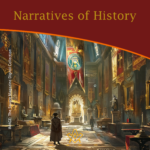 Narratives of History |
 A Very Royal Sesquicentenary |
 Unveiling the Enigma: Discover the Royal Society's Legacy and its Impact on Science. Delve into the fascinating history of the Royal Society, the prestigious UK academy shaping scientific progress since 1660. Explore its pivotal role in advancing knowledge, fostering collaboration, and unlocking the secrets of the universe. Prepare to be amazed! |
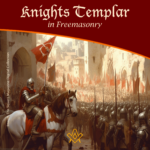 Knights Templar in Freemasonry Uncover the Mysteries of the Knights Templar in Freemasonry! Delve into the intriguing world where chivalry and symbolism intertwine. Discover the captivating rituals and ancient secrets behind the Knights Templar Masonic Orders. Explore the historical connection and delve into the enigmatic narratives that continue to fascinate enthusiasts today. Unveil the hidden truths now! |
 The Royal Arch stands as the rainbow of promise in the Ritual; it stands as the promise of the resurrection; of that which was lost and that it shall be recovered. The question arises as to whether the Master's Word was originally communicated in the Third Degree? On this point there is some diversity of opinion. Originally published in 1915, this insight into the Fourth Degree – the Holy Royal Arch – is as relevant today as it was over 100 years ago. |
 Unveiling the Mysteries of Druidism: Discover the Intriguing Connection with Freemasonry. Explore the ancient spiritual practice of Druidism and its fascinating ties to the enigmatic world of Freemasonry. Delve into the shared symbolism and rituals that have captivated minds for centuries. Unlock the secrets of these intertwined traditions today! |
 Uncover the legacy of freestone masons and their pivotal role in crafting medieval cathedrals. Discover the artistry behind their techniques, the hierarchy within their craft, and the enduring impact of their intricate carvings. A deep dive into the world of these master craftsmen awaits you! |
 Unearth the intriguing journey from Vincha Culture to Freemasonry. Discover how ancient building methods intertwine with modern Masonic philosophies. This exploration will shed light on the fascinating link between the Serbian term "shestarenye" and the symbolic significance of the compass in Freemasonry. |
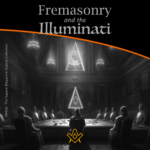 Freemasonry and the Illuminati Unravel the enigmatic world of Freemasonry and the Illuminati in our latest exposé. Dive into centuries-old mysteries, debunk conspiracy theories, and discover the truth behind these elusive societies. Are they puppet masters or mere myths? Join us as we dissect history and fact from fiction. |
 The Île des Templiers, or “Island of the Templars” lies within a leafy park in Paris. The execution site of Jacques du Molay, the last Grand Master of the Knights’ Templar bears a plaque with the epitaph ‘A cet endroit / Jacques de Molay / Dernier grand maître / de l'ordre du temple / a été brûlé le 18 Mars 1314’ (‘In this location / Jacques de Molay / Last grand master / of the order of the temple / was burned on 18 March 1314’) |
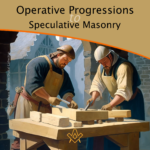 Operative Progressions to Speculative Masonry Both Operative and Speculative Masonry are an important part of the modern fraternity of Freemasonry, which combines elements of both traditions. Today, Freemasonry is a fraternity that is open to men of good character, who are interested in personal development and in making a positive contribution to their communities. |
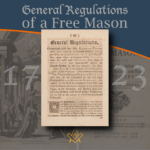 General Regulations of a Free Mason, 1723 General Regulations of a Free Mason as contained in Anderson's Constitutions of the Freemasons, published 1723. the Regulations are of great historical interest. Compiled by George Payne, the second Grand Master of the Premier Grand Lodge of England, they were printed in 1722/3, thus published just over five years after the formation of the Grand Lodge 1717. |
 The Genesis of the 1723 Book of Constitutions 2023, marks the three hundredth anniversary of the publication of the first printed Book of Constitutions of the Grand Lodge formally established in London two years previously. This is an anniversary whose significance extends beyond freemasonry. A paper by Andrew Prescott |
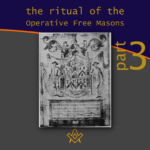 The Ritual of the Operative Free Masons - P3 Existing Operative Free Masons. The ritual I am about to refer, is that of "The Worshipful Society of Free Masons, Rough Masons, Wallers, Slaters, Paviors, Plaisterers, and Bricklayers." By Thomas Carr, M.D., P. M. Honorary Member of the Guild of Operative Free Masons |
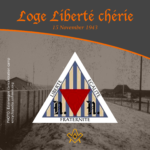 Liberté chérie was a Masonic Lodge founded in 1943 by Belgian Resistance fighters and other political prisoners at Esterwegen concentration camp. It was one of the few lodges of Freemasons founded within a Nazi concentration camp during the Second World War. |
 The Ritual of the Operative Free Masons - P2 If anyone doubts the fact that the formation of Speculative Free Masonry was due to and based upon Operative Free Masonry, it is quite easy to convince him of his error if he will only study the first Book of Constitutions. By Thomas Carr, M.D., P. M. Honorary Member of the Guild of Operative Free Masons |
 In 1881, Freemasonry rose from the ashes of a fire in the mining town of Kokomo, Summit County, Colorado. Corinthian Lodge No. 42, along with Kokomo, no longer exists but it holds the record of having been – at an elevation of 10,618 feet – the highest Masonic Lodge in the USA. |
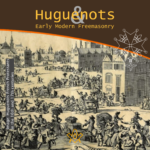 The Huguenots and Early Modern Freemasonry The Huguenots influence in the development of early modern Freemasonry at the time of the formation of the Grand Lodge in London around 1717 / 1723. |
 November is a month of reflection – perhaps due to the fact that we are getting close to the years' end – but also because Remembrance / Armistice Day (11 November) is a significant date in most countries' diaries. |
 Speculative Freemasonry, as practise by Grand Lodge of England, was officially born just over three hundred years ago, is today an international organisation, counting over six million members. It has been subjected to persecution, suppression, and abolition throughout its history. In its infancy, only a couple of decades after its official birth, it had already become a target. |
 The Ritual of the Operative Free Masons - P1 The original paper was written, first, to prove that Speculative Free Masonry was derived from Operative Free Masonry; second, to give some account of the Operative Free Masons, of their Ritual, and of their customs. By Thomas Carr, M.D., P. M. Honorary Member of the Guild of Operative Free Masons |
 American Fraternalism in the 19th and Early 20th Centuries The late 19th and early 20th centuries in the United States has been called the "Golden Age of Fraternalism." How did this come about and why was the idea of joining a fraternal organization so popular? We will explore this question and examine the regalia used by many fraternal organizations in this period. |
 Societas Draconistarum, meaning "Society of the Dragonists"– was a chivalric Order for selected nobility, founded in 1408 by Sigismund von Luxembourg, who through marriage became the King of Hungary (1387–1437) and later Holy Roman Emperor. The Order was fashioned after the military orders of the Crusades, requiring its initiates to defend the cross and fight the enemies of Christianity, in particular the Ottoman Empire. |
 The Perjured Free Mason Detected Was Samuel Prichard a perjured individual, or simply a misguided Freemason? Prichard's book "Free Masonry Dissected" published in 1730, is now used by many Masonic historians as a source of reference with regards to the introduction of the third degree into the Craft. But at the time it was published in 1730, it was not so well received by members of the Grand Lodge of England. |
 17th century and the Holy Royal Arch This article focuses on a period of transition between a point in time when we can safely and historically identify the first formation of what could be called as the ‘Royal Arch’ and the historical events that have preceded it. |
 Most Freemasons have heard the terms 'Operative' and 'Speculative' Masons, and this article helps to understand the difference: |
 Roberts' Constitutions of Freemasonry 1722 Published a year before Anderson's Constitutions, The Old Constitutions Belonging to the Ancient and Honourable SOCIETY OF Free and Accepted MASONS. Originally printed in London England; Sold by J. Roberts, in Warwick-Lane, MDCCXXII.(1722) |
 From 'Songs of religion and life', 1876 by John Stuart Blackie (1809-1895) |
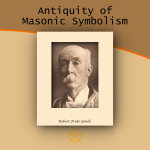 On the Antiquity of Masonic Symbolism Is the Symbolism of Masonry an inheritance derived from the old Masons who flourished before the era of the Grand Lodges (1717); or has it been borrowed from the Rosicrucians or others, after 1717? |
 Mason's Marks – from Egypt to Europe? Mason's marks have been a source of intrigue, not only to Freemasons but to historians and archaeologists. The use of simple pictograms have been employed for millennia by artisans to identify their work. But where did they originate and why? |
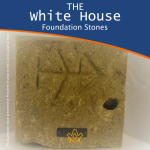 The White House Foundation Stones Further to the articles in our series on the history of the stone masons, we have a rather intriguing addition. During the 1950's renovation of the White House, President Truman retrieved more than 100 stone blocks with stonemasons marks. |
 What the Goose and Gridiron Tavern is in the ancient annals of London Freemasonry, The Green Dragon Tavern is to the memories of the Free-mason, of Boston and New England. |
 Auschwitz concentration camp: video photo article taken in 2013 |
 There are two things of importance happening this day - 27 January |
 Two approaches regarding the understanding of Freemasonry |
 Masonic Research in England c1930 An article which appeared in an American Masonic magazine, c1930 and which was reproduced in England, provoking a little controversy. |
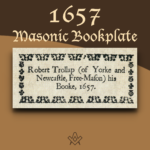 Masonic bookplates the ‘Brethren’s spiritual coats of arms and marks’ |
 The Unlawful Societies Act of 1799 Rebellious Freemasons and the 21st century |
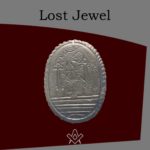 In 1912, Sarah Dowd of Dromore, Ireland, found a Masonic jewel dated 1517 - a date two hundred years before the establishment of Grand Lodge... |
 Freemasonry and Fascist Regime Interesting speech by the famous historian Prof. Aldo A. Mola, who links the fascist regime with the Masonic Associations. |
 Was famous Russian poet Alexander Pushkin a Freemason? And if so, was he a member of the lodge ‘for which all the lodges in Russia were destroyed’? |
 The Importance of Masonic Research Why is accurate - or authentic - Masonic research so important? The importance of making a daily advancement in Masonic knowledge is something that The Square is passionate about promoting. |
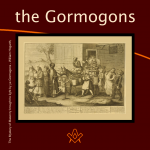 The Antient Noble Order of the Gormogons had a brief existence in the eighteenth century; they left few records or accomplishments, |
masonic knowledge
to be a better citizen of the world
share the square with two brothers

click image to open email app on mobile device
Tubal Cain
Masonic Apron NFT
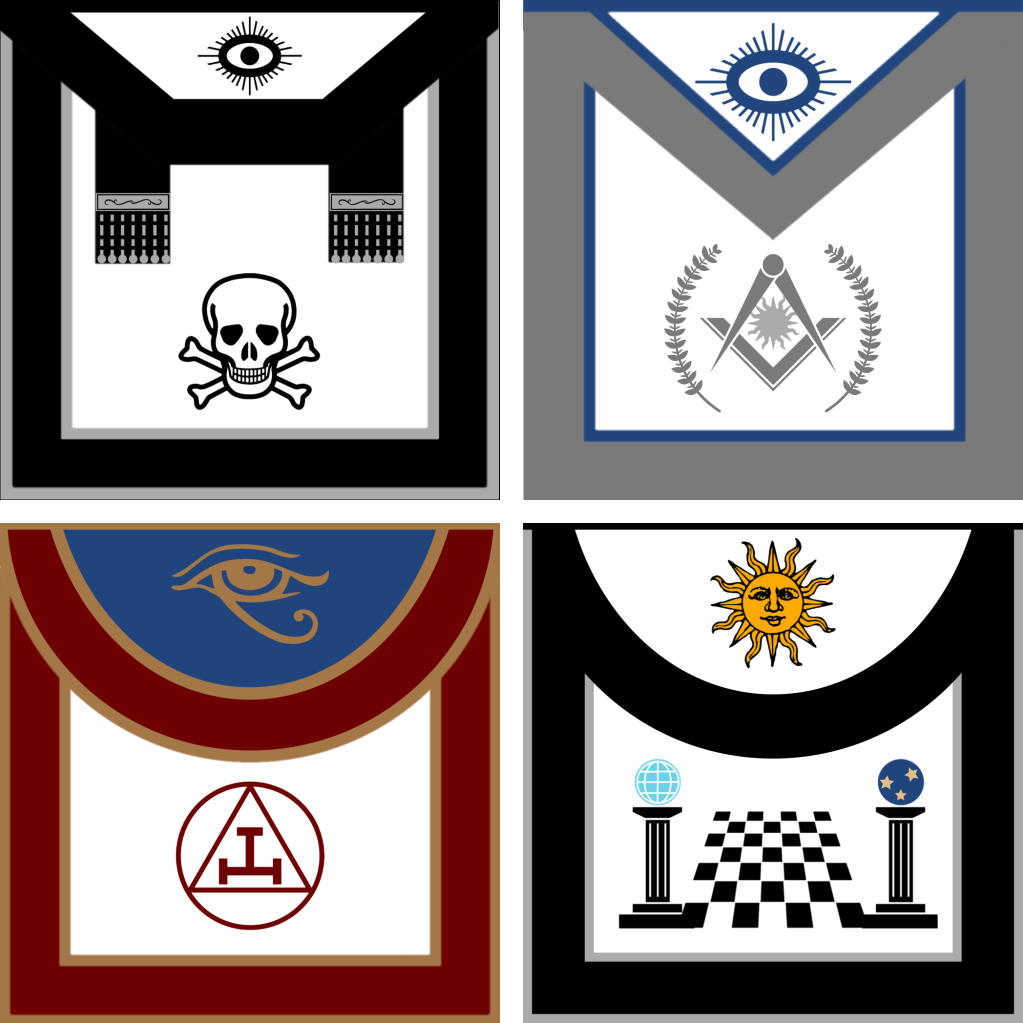


Each NFT includes the JPEG image plus a full size masonic apron and shipping worldwide
